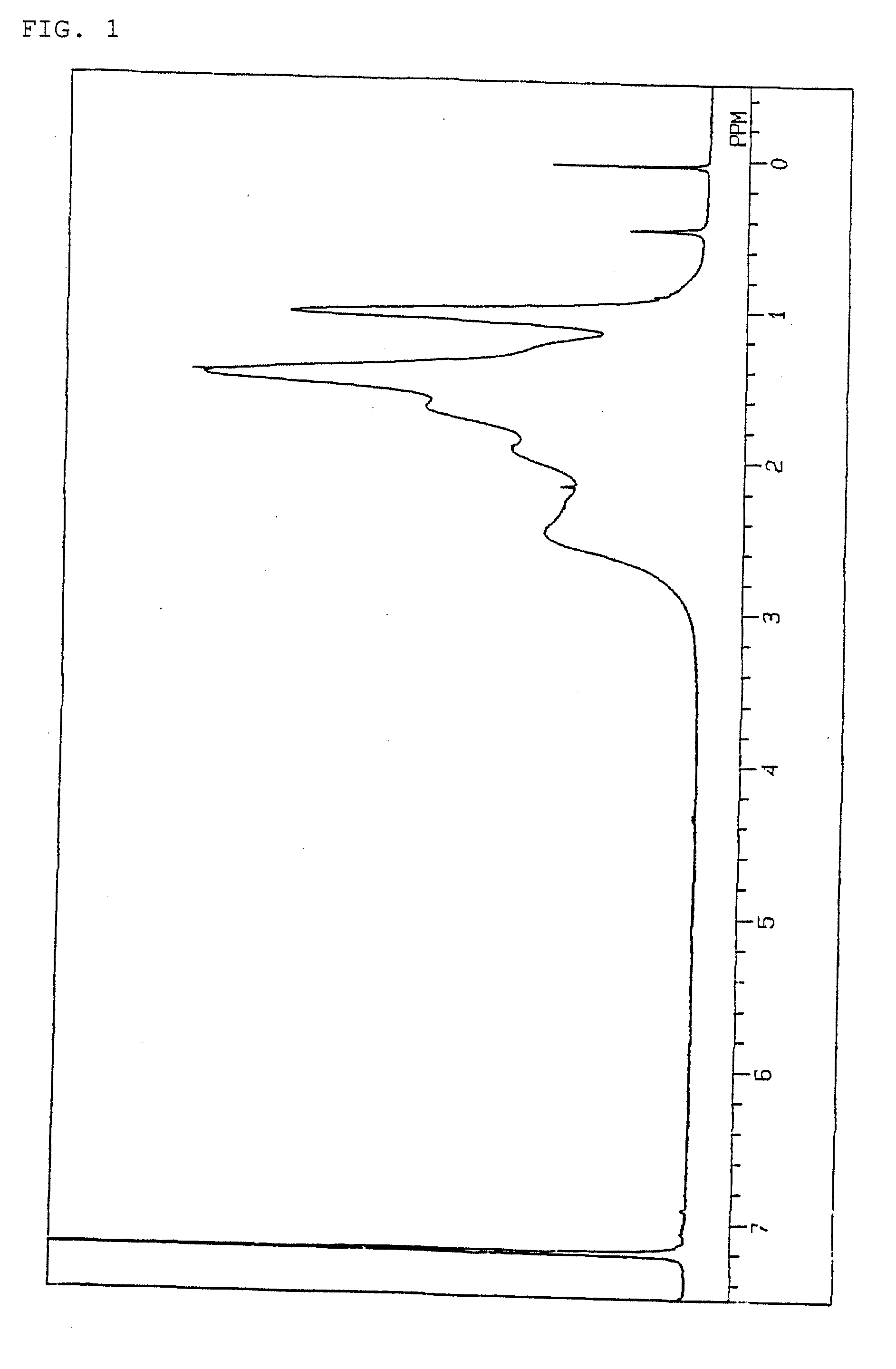Method For Producing Cyclic Olefin Addition Copolymer, Cyclic Olefin Addition Copolymer And Use Thereof
a technology of cyclic olefin and copolymer, which is applied in the field of producing a cyclic olefin addition copolymer and its use, can solve the problems of insufficient smoothness or transparency, difficult control of the molecular weight of the polymer, inferior toughness and brittleness of the formed body, etc., to achieve excellent heat resistance, low water absorption, and excellent transparency
- Summary
- Abstract
- Description
- Claims
- Application Information
AI Technical Summary
Benefits of technology
Problems solved by technology
Method used
Image
Examples
examples
[0095]Hereinafter, the present invention will be more specifically explained with Examples, but the present invention is not limited to these Examples. The following methods were used to measure or evaluate the molecular weight, glass transition temperature, light transmittance, water absorbency, cracks in film, tensile strength, and ratio of structural units in copolymers.
(1) Number-Average Molecular Weight and Weight-Average Molecular Weight
[0096]Measurement was performed at 120° C. by using o-dichlorobenzene as a solvent, with an H-type column manufactured by Tosoh Corporation, on a gel permeation chromatograph Model-150C manufactured by Waters Corporation. The molecular weight obtained is a value in terms of standard polystyrene.
(2) Glass Transition Temperature (Tg)
[0097]The glass transition temperature of a copolymer was recorded as a peak temperature of tan δ (=E″ / E′) calculated from a storage modulus (E′) and a loss modulus (E″) measured with RHEOVIBRON DDV-01FP (manufactured...
synthesis example
[0103]5-Butylbicyclo[2.2.1]hept-2-ene, 5-hexylbicyclo[2.2.1]hept-2-ene, and 5-trimethylsilylbicyclo[2.2.1]hept-2-ene were synthesized by Diels-Alder reaction and purified under known conditions. The stereoisomer ratio (endo / exo) after purified by distillation was 75 / 25 in 5-butylbicyclo[2.2.1]hept-2-ene, 80 / 20 in 5-hexylbicyclo[2.2.1]hept-2-ene, and 60 / 40 in 5-trimethylsilylbicyclo[2.2.1]hept-2-ene.
example 1
[0104]A 100-ml pressure-resistant glass reaction vessel was fully purged with nitrogen. Here were charged 22 g of dehydrated toluene, 22 g of dehydrated cyclohexane, and then were added 50 mmol (7.5 g) of 5-butylbicyclo[2.2.1]hept-2-ene obtained in Synthesis Example, 5.48 ml of a 7.66-mol / l dried toluene solution of bicyclo[2.2.1]hept-2-ene (42 mmol), and 0.42 g of styrene. The reaction vessel was tightly sealed with a rubber seal and heated to 75° C. Subsequently, polymerization was started by adding 0.40 ml of a 0.0005-mol / l toluene solution of palladium acetate, 0.10 ml of a 0.002-mol / l toluene solution of tricyclohexylphosphine-triethylaluminum complex, and 0.40 ml of a 0.0005-mol / l toluene solution of triphenylcarbenium tetrakis(pentafluorophenyl)borate. At 45 minutes and 90 minutes after the start of the polymerization, 0.52 ml of the above toluene solution of bicyclo[2.2.1]hept-2-ene was added at each time, and the polymerization was continued for 3 hours in total. The conver...
PUM
| Property | Measurement | Unit |
|---|---|---|
| mol % | aaaaa | aaaaa |
| mol % | aaaaa | aaaaa |
| mol % | aaaaa | aaaaa |
Abstract
Description
Claims
Application Information
 Login to View More
Login to View More - R&D
- Intellectual Property
- Life Sciences
- Materials
- Tech Scout
- Unparalleled Data Quality
- Higher Quality Content
- 60% Fewer Hallucinations
Browse by: Latest US Patents, China's latest patents, Technical Efficacy Thesaurus, Application Domain, Technology Topic, Popular Technical Reports.
© 2025 PatSnap. All rights reserved.Legal|Privacy policy|Modern Slavery Act Transparency Statement|Sitemap|About US| Contact US: help@patsnap.com



